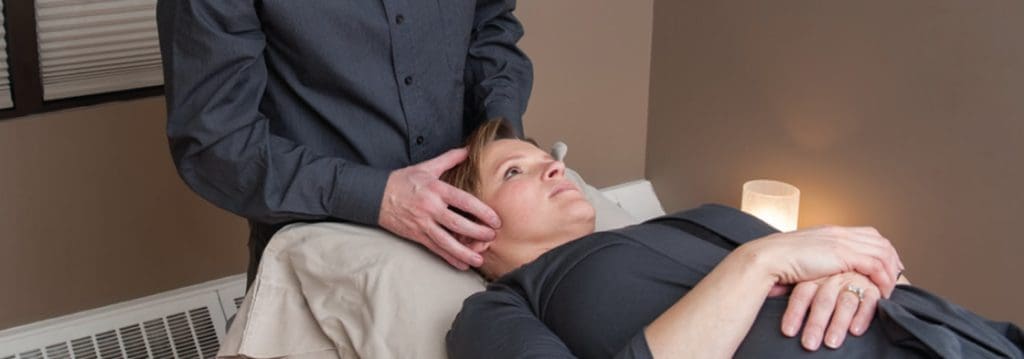TMD/TMJ Temporomandibular Joint Dysfunction and Craniofacial / Craniomandibular Pain
The Cranium – The Cervical Spine –The Mandible
There can be numerous causes and contributing factors to experiencing temporomandibular pain and joint dysfunction. Contributing factors may include: myofascial/muscle pain, arthrogenic (internal derangement, arthritis), capsulitis and subluxations. These may be an acute onset of pain episodes or something long standing for years, that started with clicking, then became painful and at some point develop into a locking episode.
TMD clients may have a number of symptoms that may contribute:
- Headaches (chronic or migraine)
- Pain behind the eyes or blurring of vision
- Unexplained tooth pain
- Earaches, congestion or ringing ears
- Tinnitus
- Clicking, popping or grating sound in the jaw joints
- Limited opening or locking; deviations or deflections of the mandible when opening
- Dizziness
- Pain in the joint or facial region when chewing, talking or yawning
- Facial pain and/or numbness of face and head
- Neck and/or throat pain
- Difficulty in closing the teeth together in normal occlusion
- Fatigued jaw/facial region.
Contributing factors for a client’s pain may include:
- Poor posture
- Trauma or whiplash
- Your teeth and your bite
- Clenching or grinding
- Mouth breathing
- Parafunctional habits: nail biting, frowning, chewing on pencils, etc.
- Arthritis in the temporomandibular joints
- Stress
- Joint Hypermobility
Typcical TMD dysfunctions:
- Anterior disc dislocation with reduction – opening with click
- Anterior disc dislocation without reduction – opening with limits due to “lock/block” (closed lock)
- Open lock – condyle has translated anterior/forward of the disc
Contributions of the cervical/thoracic spine that may direct stress to the craniomandibular joint/facial region. Posture, support, mobility of C0 (atlas), C1 (axis), C2-3 upper cervical spine to the thoracic spine, often posture, ergonomic, parafunctional habits, sleeping postures and other contributing factors that will produce pain generators for the dysfunction in the craniomandibular region.
Upper cervical extension/posterior rotation of the skull and decreased functional space between C0-C1, compression of the suboccipitals space and irritation of these tissues contributing to headaches and suboccipital pain.
Imbalance of muscle activity – increased supra and infra-hyoid muscle activity due to increased tension, possibly due to postural deficits/challenges, that contributes to muscles of mastication activity to keep the mouth closed in a normal resting posture, and creating “clenching” muscle tension.
Examination will encompass but not limited to:
- Detailed history obtained of symptoms, any possible traumas, past treatments, understanding onset and aggravating factors.
- Testing of CRANIOFACIAL, CERVICAL and THORACIC SPINE –range of motion, joint mobility
- Palpation of the region and surrounding muscles, joints and fascia
Treatment plan and development to help you get back to normal activities!!
We look to collaborate with you, the client directly and understand your needs and goals. You are number one in our eyes. We will work with your general/pediatric dentist, orthodontist, oral surgeon, general/family providers, Ear Nose and Throat physician (ENT), psychologist and other health providers. We will work on making suggestions of consultation of one of the above if this may be helpful, with respect and contacting of your referring provider. This may include sleep medicine, a myofunctional therapist, stress management and other professionals.

